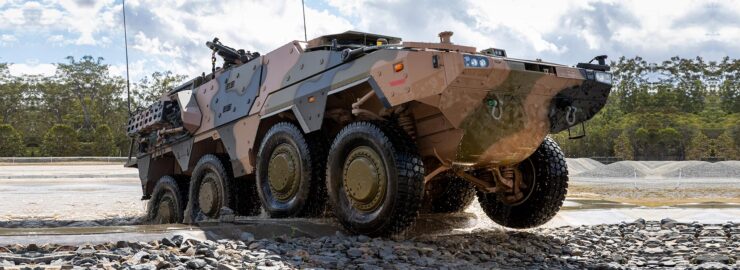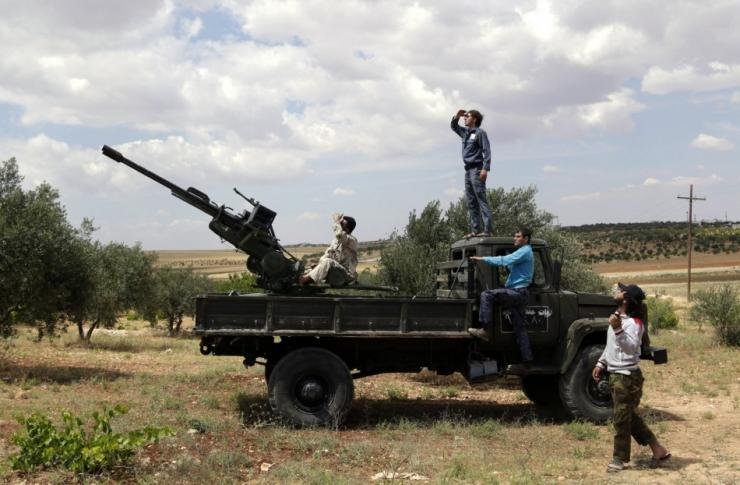
India faces a complex and interesting geopolitical challenge, ranging from maritime sovereignty to securing its mountainous border with China or Pakistan. This challenge will necessarily be addressed in an inter-service environment. By facing this challenge, India is de facto getting closer to Western armies, which consider that high-intensity warfare in the next couple of decades is a possibility, and are getting ready for it by integrating their forces.
Experts will have a chance to present specific situations. In this article, however, we shall choose a more generalist approach and focus on how land forces are evolving in the West—as India will perhaps follow the same path soon, as it can now consider this option under the light of various perspectives.
As was previously concluded, the art lies in finding a proper balance. Sophistication is an important factor, as a solid strategy requires having capabilities no lower than those of the most dangerous adversary; a strategic notion known as symmetry. This notion applies to all types of meaningful equipment and can be considered in terms of equipment quality, quantity and renewability. This notion also applies to troops.
Superiority factors are many, and the most recent conflict in the Karabakh region has illustrated it once more: the newest addition is drones, and their inherent capacity to dissipate the fog of war for its commanders, while thickening it for the enemy (as drones can wage offensive electronic warfare, send jamming signals or act as decoys).
Strategy expert David Patrikarakos writes: “Turkish drones were decisive in the 2020 Nagorno-Karabakh war between Armenia and Azerbaijan. That same year a Turkish ‘drone blitzkrieg’ campaign destroyed dozens of Syrian regime vehicles and . Everywhere Turkey has a military footprint there are drones front and centre.”
Indeed, India is not the only country modernizing its forces, and Turkey has been busy implementing new technologies.
Another evolution point in land forces, which must be taken with precaution, is the computerization of the soldier, or the militarization of augmented reality. The number of available sensors and transmission devices will enable the soldier and its commanders to dramatically increase their situational awareness. But this revolutionary upgrade must bear in mind the natural limits of man, and not be mistaken for what it isn’t: an unlimited breakthrough in military capacities by transferring the art of war to machines.
Progress in artificial intelligence and cognitive sciences have, however, opened up a new realm of possibilities, the limits of which vary on the ethical boundaries of the organizations which choose to engage in this new field. While these new technologies do have a hefty price tag, it must be remembered that they allow the optimization of existing forces, and can even supplement insufficient numbers of troops, by increasing their capacity.

A well-thought out vision must be designed and developed, before the digitization of the battlefield can be implemented. In a relatively close future, land combat drones will become a new reality: this much is a given. The question is: will they supplement human warriors, or will they outright replace them? This conundrum will not be examined in depth, in this article. Suffice it to say that these technologies will come at a high cost, and that they must never completely replace humans. War is a matter for men, and the ever-more-likely “wars within populated areas” mean that our need for humanity, in battle, can only come from actual soldiers, in the flesh. A large part of wars relies on the ability, for instance, to conquer hearts and minds, even in the context of high-intensity warfare. This will never be a task for machines.
Also, these technologies are able to make each soldier more capable, and can therefore be a good fix for aging countries who experience difficulty in staffing their armed forces sufficiently. For young, vibrant and expanding demographics like India’s, this advantage is less important.
Israel has taken a similar path, with the recent development and soon-to-be-fielded Carmen system, which will afford situational awareness comparable to fighter jets, to the IDF infantryman, as reported by specialist Arie Egozi: “The development of the systems that will turn each combat vehicle into a real “war machine” has reached a stage where the components have been developed and now will be integrated on the combat vehicles.”
The US Army has also contracted with Microsoft to adapt Hololens systems to the infantryman’s needs. Much is expected from this collaboration but the complexity of implementation, the nascent technology, and the need to secure the infantry from fatal technological glitches has delayed the project substantially.
Here and elsewhere, everything relies on integration
A state-of-the-art information management system is just a chunk of plastic and metal, if it isn’t wired properly. Likewise, it matters little which types of equipment India builds or acquires, if it does not do so with an integration strategy. When the next challenge materializes, Indian high command must be sufficiently in touch with its forces to ensure that the entirety of the Indian army reacts “as one”.
Men and weapons systems must be connected to one another, in horizontal integration. This will result in “collaborative combat” and multiply the forces of the Indian army.
The integration must also be vertical, flexible and robust. India’s military must be able to shift the decision-making level rapidly and seamlessly, thus always leaving the mission at the appropriate level.
Each unit has a specific purpose (fire, movement, signals, etc.), and must be left to do what they do best. They must be perfectly integrated from the lowest to the highest level. This is now possible thanks to new network-management technology. Information is stored and handed out, on an as-needed basis, and is no longer thought of under the light of ownership. These new parameters must now be considered under the specter of “effects to be achieved”, as was previously covered in earlier editions.
As earlier mentioned, we are looking at a shift in philosophies. In the old days, preparing for war or waging it was a matter of synchronizing specialists, much like an orchestra director. Integration takes things a step further: forming an organizational entity which will react as one to any threat it addresses. By integrating even the lowest echelons within the information-management systems, this ambition is finally realistic.
The French have built such an infrastructure, named Scorpion, designed by specialist Harry Lye as: “… the digital backbone connecting a fleet of vehicles to create what the French Ministry of Defence called a platform for ‘collaborative combat’. It is designed to automatically distribute alerts, targeting information and a host of other data between vehicles, robots and UAVS, with the aim of optimising fire support and safety.”
The US Army is working on a similar project, described by specialist Nathan Strout as “the Army’s contribution to Joint All-Domain Command and Control, the Department of Defense’s concept to connect sensors from every domain to create a common operating picture that can be used to coordinate responses across the joint force.”
Getting the numerous military systems within the army to communicate adequately is no easy task. Engineering firms and military officers must be brought together and given a trust-filled environment where they can develop interpersonal relationships and professional empathy. The system must be kept in balance, so that the army doesn’t use its purchasing position as a ticket to magic-wand waving and place unrealistic demands upon suppliers. These suppliers, in turn, must lend a keen ear to those soldiers, and capitalise extensively on whatever experience and knowledge they acquire during their operations.
– The writer is a defence and security industry consultant having varied experience working with medium and large companies majorly in European market. The views expressed are personal and do not necessarily reflect the views of Raksha Anirveda








